Introduction: In this article, with the whole world hoping for a coronavirus vaccine, Jane Hampton Cook writes about the vaccine that conquered polio 65 years ago – a very personal story for her. Jane, the former White House webmaster for President George W. Bush, is a presidential historian and the author of nine historical books. She is a consultant for the Women’s Suffrage Centennial Commission. Her works can be found at janecook.com.
From sewing masks to donating food, Americans have shown a giving spirit during the COVID-19 pandemic. A similar spirit existed in the 1950s during another deadly epidemic: polio.
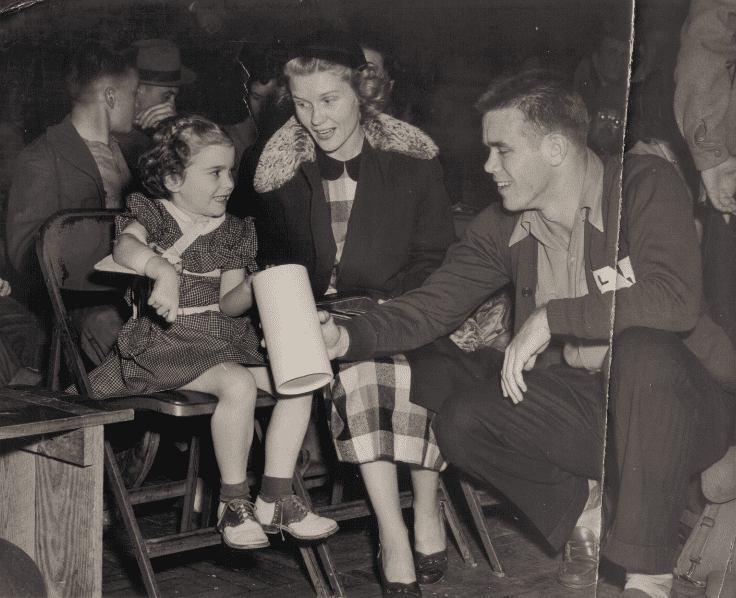
The March of Dimes was helping the fundraising effort in the 1950s for research into a polio vaccine. One such effort, in Arkansas, was highlighted in this 1951 newspaper article.
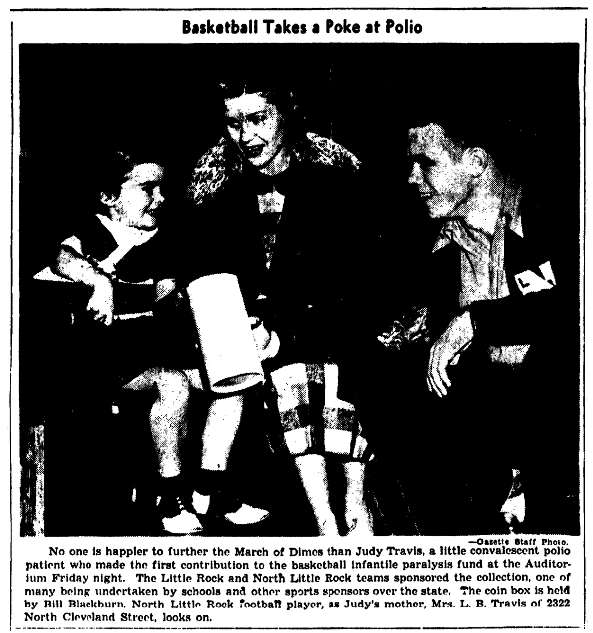
Contracting polio in 1949 at age four, Judy had lost the use of her right shoulder. The photo caption noted:
“No one is happier to further the March of Dimes than Judy Travis, a little convalescent polio patient who made the first contribution to the basketball infantile paralysis fund at the Auditorium Friday night.”
Averaging 35,000 U.S. cases a year, polio peaked in 1952 with 57,000 cases. Polio killed 2-5 percent of infected children and 15-30 percent of infected adults. It also left 1-2 percent with paralysis, often in limbs. Like Judy, in many cases the paralysis was permanent.
Pooling their resources through the March of Dimes, Americans longed for the day when a vaccine would eradicate this deadly and disabling disease. Polio was finally conquered when Dr. Jonas Edward Salk’s polio vaccine was announced as a safe treatment on 12 April 1955, 65 years ago.
A search on the keywords polio, Salk, and vaccine in GenealogyBank’s Historical Newspaper Archives tells the story of this great American medical achievement, one that can give Americans hope during the COVID-19 pandemic.
“Polio Threat Conquered by Salk Vaccine,” the Arkansas Democrat’s front page declared after epidemiologist Dr. Thomas Francis Jr. announced the effectiveness of Dr. Jonas Salk’s vaccine.
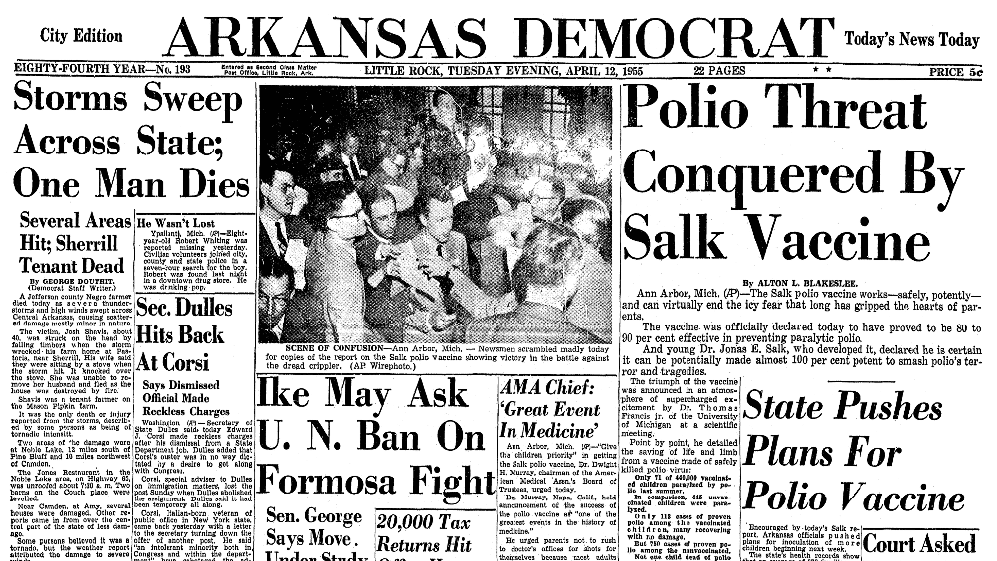
This article’s first sentence reported:
“The Salk polio vaccine works – safely, potently – and can virtually end the icy fear that long has gripped the hearts of parents.”
Francis and Salk purposely announced the vaccine’s effectiveness on the tenth anniversary of the death of Franklin Roosevelt, who suffered from polio and started the National Foundation for Infantile Paralysis (March of Dimes) that funded their research.
Polio was discovered in 1789, and the nation’s newspapers praised Salk’s vaccine for ending the 166-year scourge of the disease.
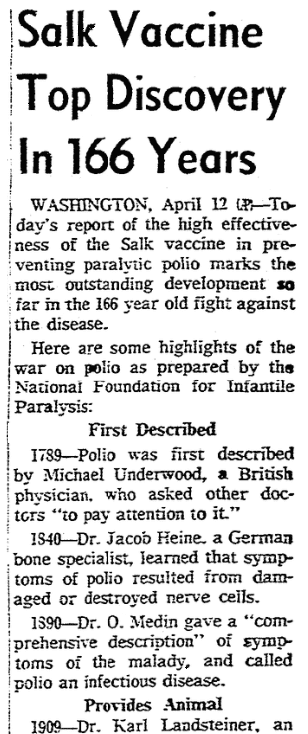
Oveta Culp Hobby, the U.S. Secretary of Health, Education and Welfare, licensed six firms to make and distribute the vaccine. “It’s a great day, a history making day,” declared Mrs. Hobby. “It’s a wonderful thing for the whole world.”
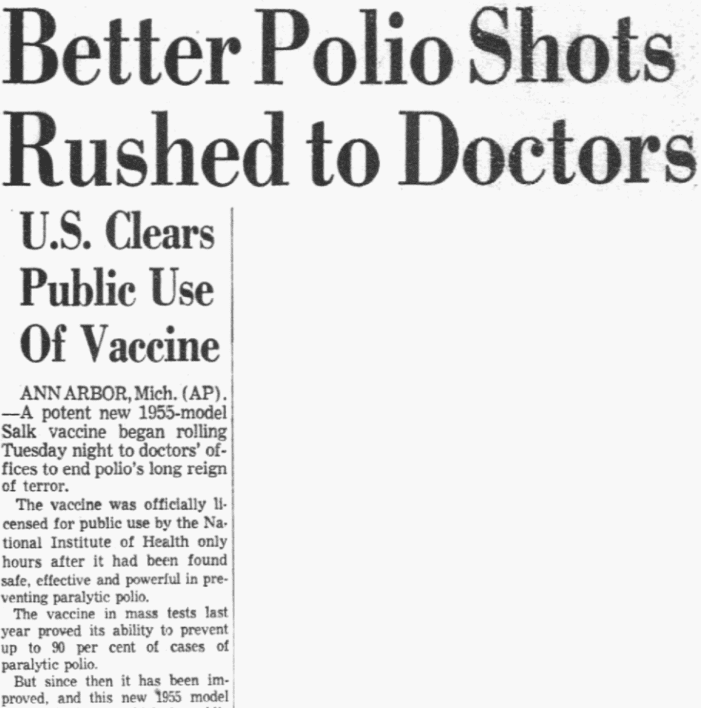
This article reported:
“The vaccine is far better than the vaccine tested last year, and it can theoretically prevent paralytic polio 100 percent, declared Dr. Jonas Salk, brilliant young Pittsburgh, Pa., scientist who developed it.”
Did Judy Travis, the five-year-old at that 1951 Little Rock March of Dimes fundraiser, receive the vaccine? Yes. Because the polio virus came in three strains, she also received the vaccine to protect her from the other strains. By the time her daughter [the author of this article] was a child in 1979, polio was eradicated in the United States.
Today a COVID-19 vaccine is already undergoing testing, with hopes of distributing it in 12 to 18 months. “Ultimately the show stopper will be obviously the vaccine where you can vaccinate people,” Dr. Anthony Fauci, director of the U.S. National Institute of Allergy and Infectious Diseases, said on 6 April 2020, of the projected final solution for COVID-19.

I was trying to think when we had a national health scare like the one we are experiencing now. The closest I could think of was with polio. In 1954 as a second grader at Meadowbrook Elementary in Fort Worth, TX, I was one of the 600,000 U.S. children that lined up for the Salk vaccine trials. Being a polio pioneer was always a badge to be proud of thanks to the success of the trials. But there is another amazing thing equally remarkable: the Salk polio vaccine trial stands as the largest peacetime mobilization of volunteers in American history, requiring the efforts of 325,000 doctors, nurses, educators and private citizens — with no money from federal grants or pharmaceutical companies. The results were tracked by volunteers using pencils and paper.
Hi Jan. My parents moved from Arkansas to Texas. I also grew up in Fort Worth, Texas, not far from Meadowbrook Elementary School. I went to Atwood McDonald. Thanks for reading the article and your insight on the peace time mobilization. I didn’t know about those numbers. Warmly, Jane Hampton Cook
My father worked at the site that administered the Salk vaccine in Yuma, AZ, and he made sure we were administered our three doses. I remember the summers; we were asked by our parents to play quietly, not to get overheated in the Yuma sun for fear we would come down with polio. There was the summer two of my brother’s classmates caught it. Ruthie lived on our block and was in a wheelchair, paralyzed until she passed away at 24. Byron recovered completely. The minister’s wife at the Methodist Church we all attended had all three variants of the disease -– and passed away at 29. Those were the only cases in town that summer. My brothers and I listened to our parents — and no one was allowed to go to the town’s swimming pool for fear that was where polio was hiding.
We were visiting my paternal cousins the weeksnd that the 3rd sugar cube was to be administered. So we went anyway as visitors to their town’s distribution site.
We also persuaded my cousin’ s family to go then, rather than wait for the catchup time, even though they had company.
Sure enough, when we returned, my mother a nurse, asked my dad if we had gotten our cubes as scheduled!!